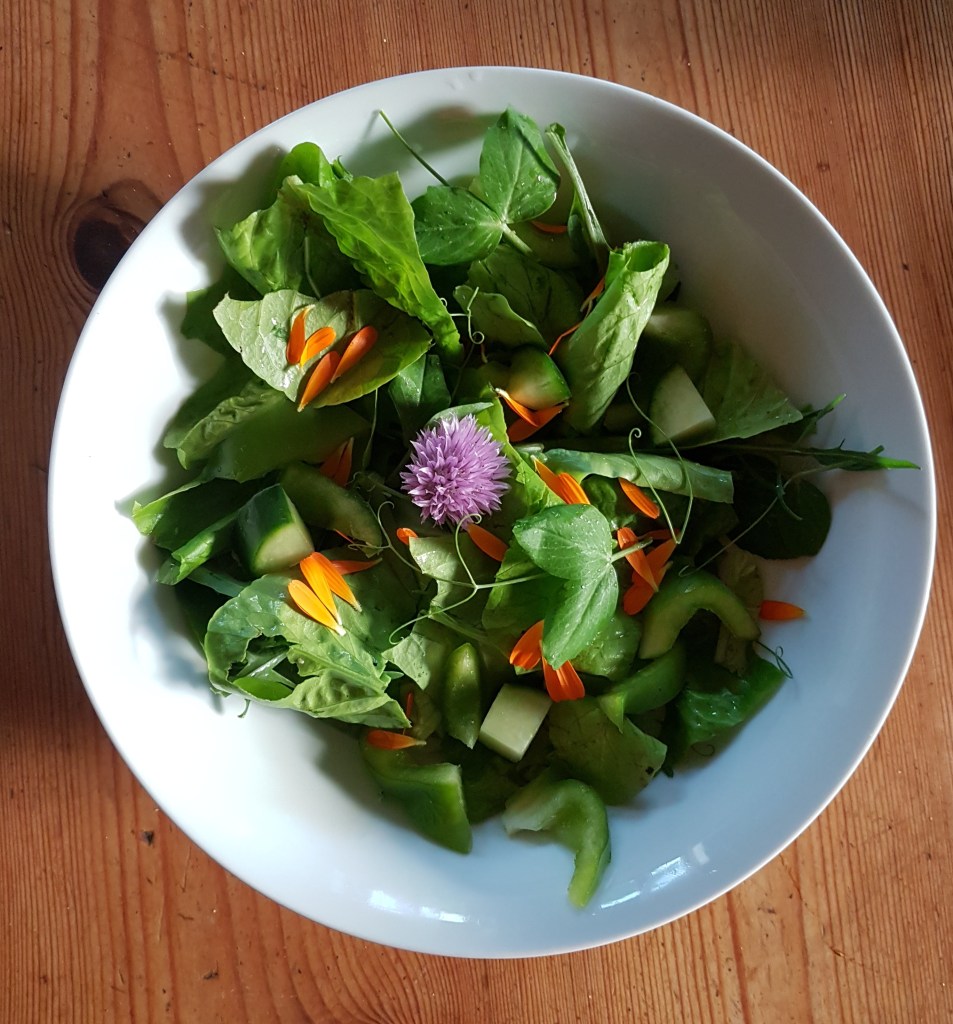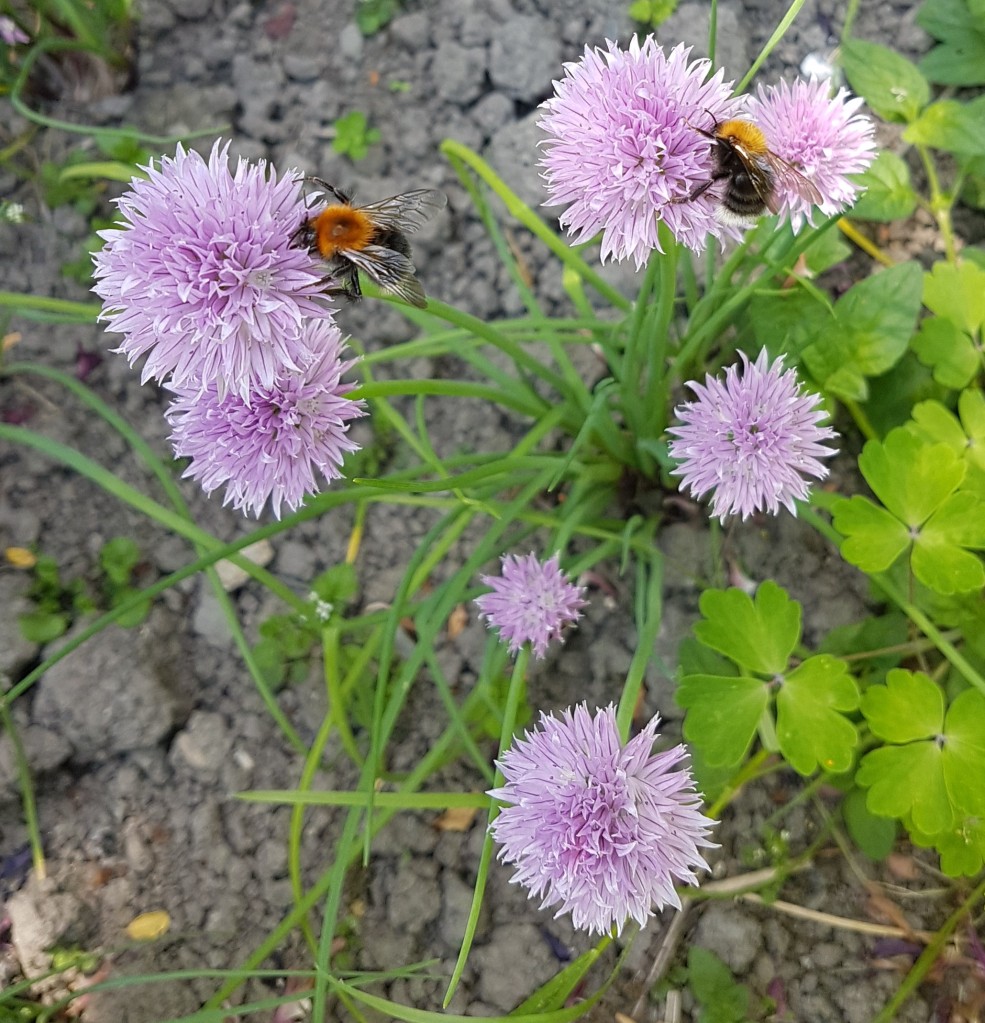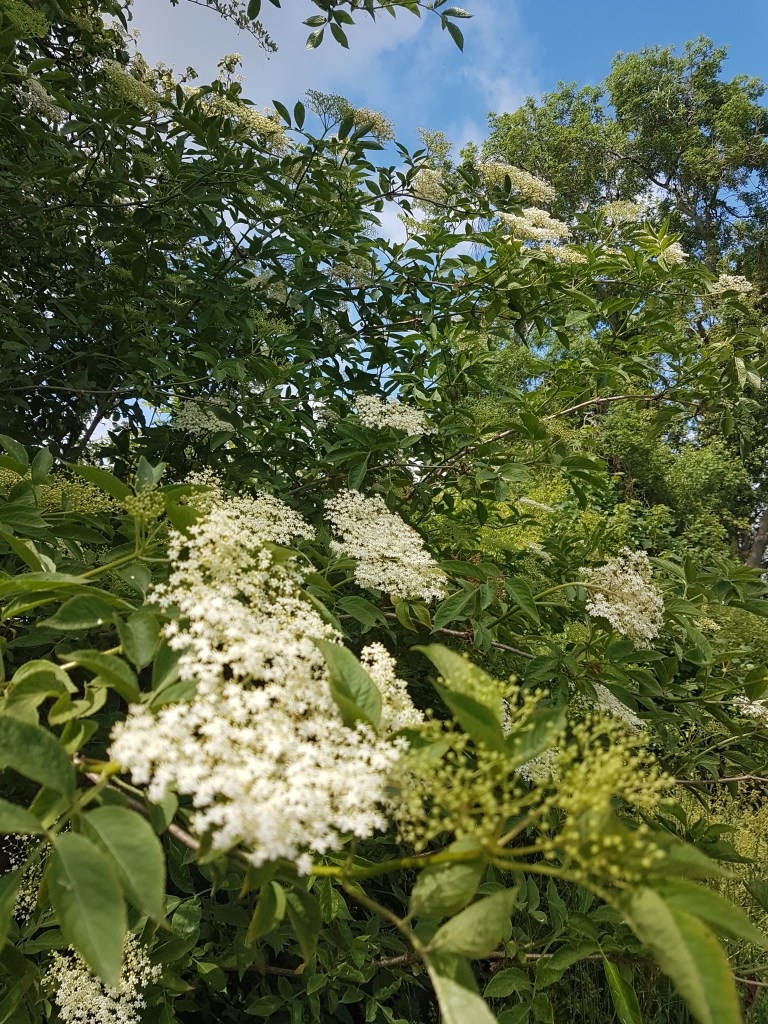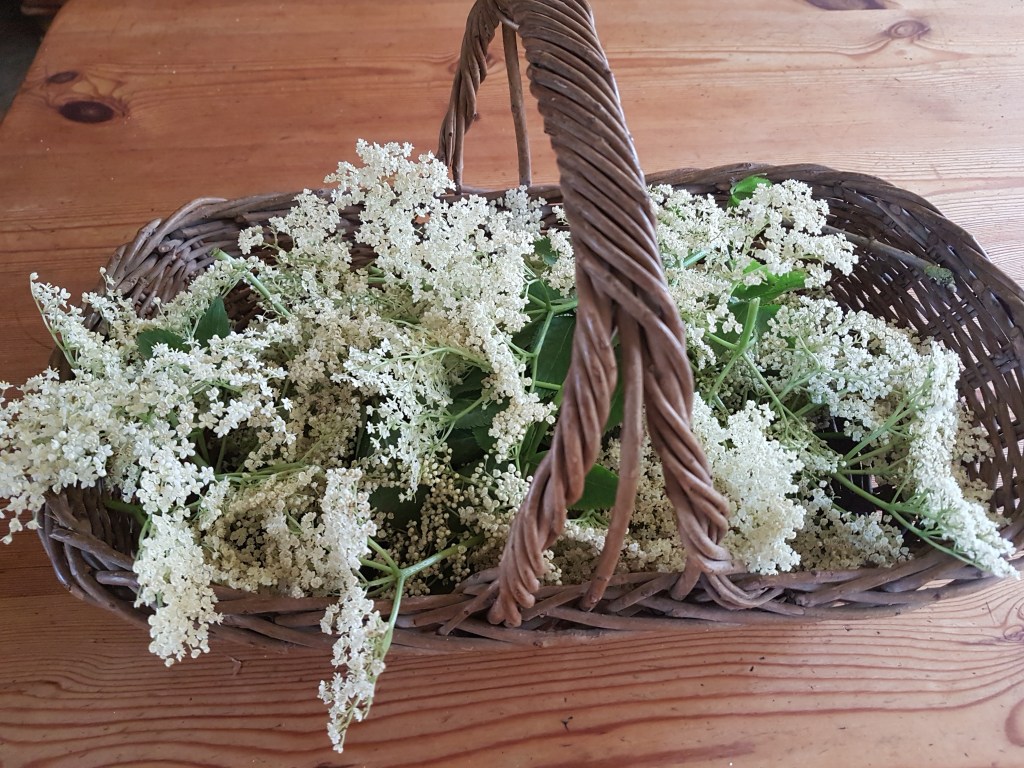This favourite is often only used as green garnish scattered over potato salad or egg mayonnaise and what a trick is being missed! One of my lockdown pastimes has been revisiting some of my old recipe books and then trying to be creative making meals of out of all the store cupboard oddments. Some have been a great success – others have not been quite so popular (beetroot and marigold pilau rice was a low point in some people’s view – I quite liked it).
Chive leaves are usually added at the end of cooking to give a mild onion flavour – over cook and their flavour will disappear. In French cuisine chives are a consitutent part of fines herbes (finely chopped parsley, chives, tarragon, and chervil) which is used to add a delicate flavour to savory dishes at the end of cooking. Chives can be chopped into soft cheese or sour cream as a dressing.
But in my view one of the best uses of chives is the freshly opened flowers. Picked before fully open they provide a peppery addition to salads as well as looking stunning against the green of lettuce.

In my lockdown experimental mode I was making coleslaw and didn’t want to deplete the dwindling onion stocks so wondered how to add some life to a pretty bland cabbage concoction? My cheery chives came to mind – I picked a barely open flower and removed all the petals from the head and scattered them into the coleslaw. It gave a wonderful oniony, peppery flavour and I wonder why I never thought about it before and so much quicker than peeling and chopping an onion .
A few random chive facts…
Chives allium schoenoprasum are unusual in that they grow wild in northern Europe and North America and Australia. Found throughout Asia it is thought that Marco Polo was responsible for bringing them to Europe where they have been cultivated since the Sixteenth Century.
The clump forming plant will tolerate most conditions and looks attractive when used as an edging plant in the herb or vegetable garden. Chives are said to repel insects and a wash made from their leaves and water is used to prevent mildew and apple scab.
Keep removing the flower heads and stems as througout the summer to ensure a continuous supply. Do not eat the flowering stems or flowers that have been open for a day or two as they are tough and unpalatable.

Chives are often used in companion planting as most insects do not like its smell but its cheery purple flowers are beloved by bees. A recent survey of pollinating plants placed chives among the top 10 nectar producing plants in the UK.
So even if you don’t care for this herb make sure to grow some in your garden for the bees.
More recipe ideas can be found here – have look and experiment!



